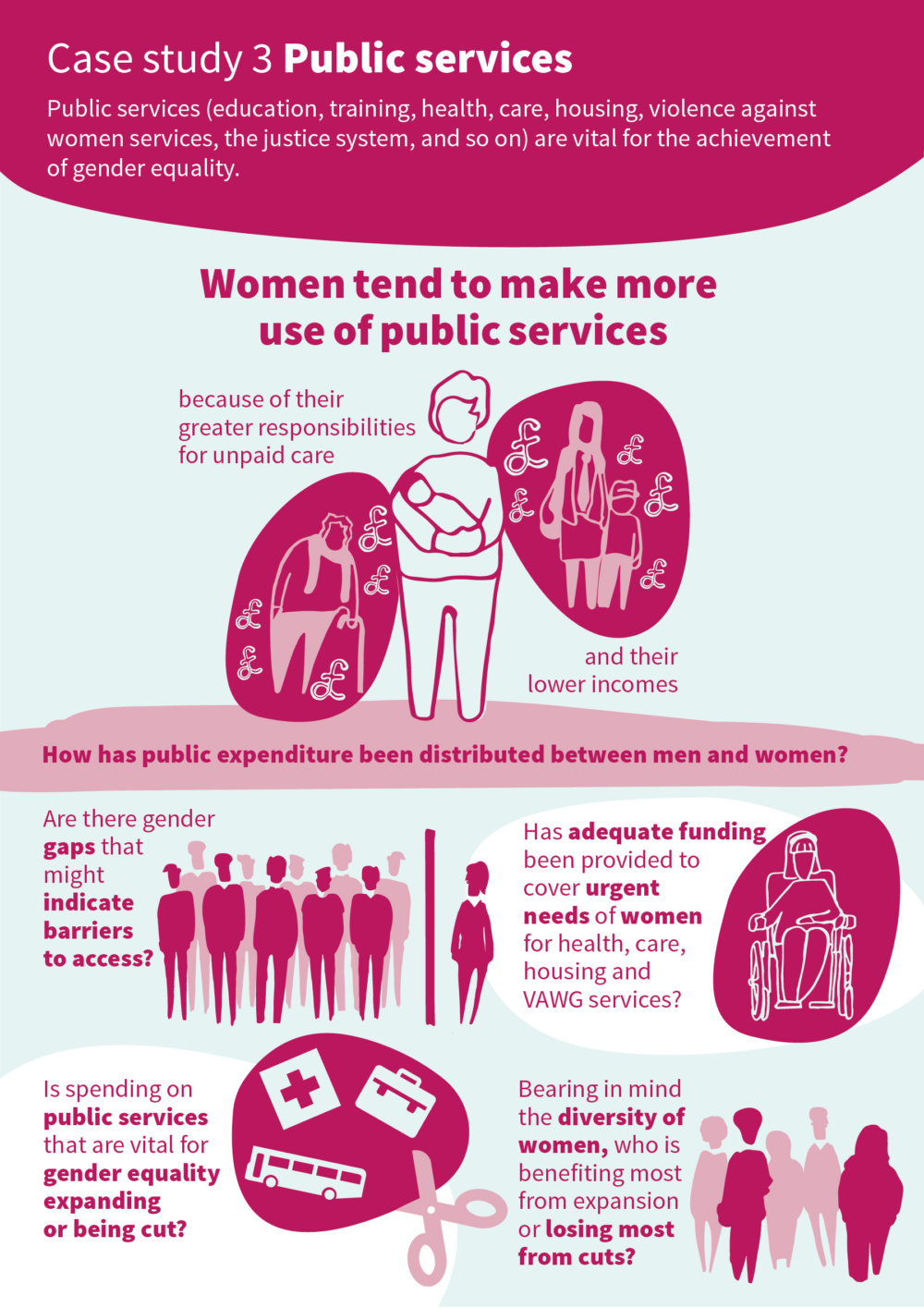Public services are vital for the achievement of gender equality. This includes education, training, health, care, housing, services related to violence against women and girls (VAWG), support for small businesses, the justice system and many other sectors.
Women tend to make more use of public services because of their greater responsibilities for unpaid care and lower incomes. However, in some cases (such as support for small businesses and technical training), women may use the service less than men, because of access barriers. In other cases, the need among women for a particular service may be lower.
Gender responsive budgeting calls for analysis of the implications of spending on public services for women and men, girls and boys.
- How has public expenditure on services been distributed between women and men, girls and boys?
- Bearing in mind the diversity of women, who is benefiting most from expansion or losing most from cuts?
- Are there gender gaps that might indicate barriers to accessing public services?
- Has adequate funding been provided to cover urgent needs of women for health, care, housing and VAWG services, for themselves and for those they care for?
- Is spending on public services that promote gender equality expanding, or is it being cut?
- Are working conditions in the public sector (pay, career prospects and work patterns) conducive to greater gender equality or hindering them?
This kind of analysis requires data on how much the government has spent on public services in the past and plans to spend in the future. Budget documents and other official documents from the Ministry of Finance and other ministries should provide this data.

